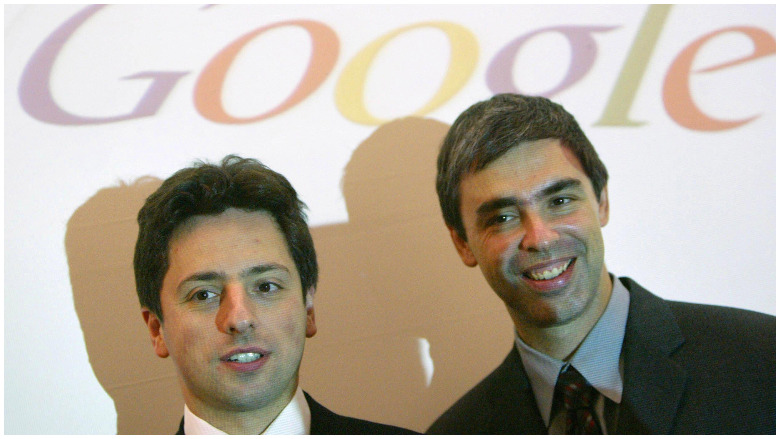
Getty Google's founders Sergey Brin and Larry Page.
Google was the brainchild of two graduate students at Stanford University, Larry Page and Sergey Brin, who wanted to find a better way to help people search for information on the Internet. At the time, search results were returned based on the number of times a word appeared in an underlying page, which delivered a confusing list of often irrelevant results to searchers.
Google is celebrating its own birthday through a September 27, 2019 Google Doodle. The search engine is 21 years old.
“21 years ago, two Stanford Ph.D. students, Sergey Brin and Lawrence (Larry) Page, published a paper about launching a prototype of a ‘large-scale search engine,'” Google wrote with the Doodle. “We chose our systems name, Google, because it is a common spelling of googol, or 10100 and fits well with our goal of building very large-scale search engines,” Google wrote. Google was originally called BackRub, believe it or not.
Google noted: “Today, Google operates all over the world in over 100 languages, answering trillions of search queries each year. The scale is large, to say the least.” On its website, Google declares that its mission is to “organize the world’s information and make it universally accessible and useful.”
Here’s what you need to know:
1. Larry Page Was Raised in Michigan to Parents Who Taught Computer Science at a Major State University
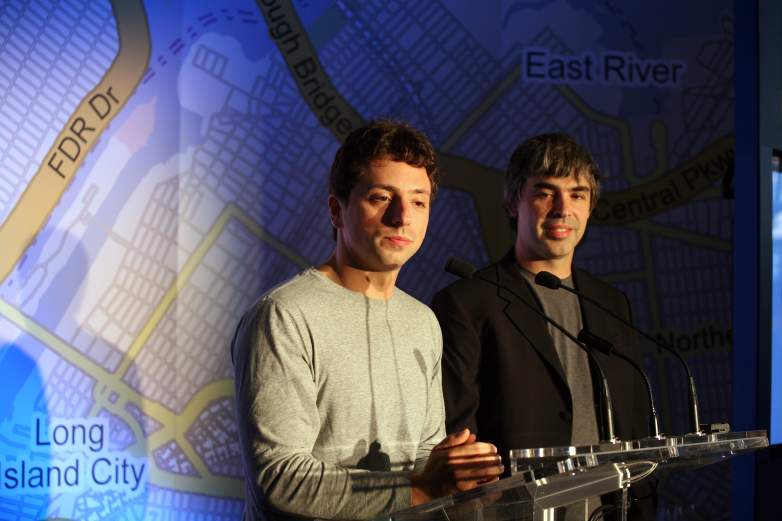
GettyGoogle founders Larry Page (R) and Sergey Brin (L) speak at a press conference announcing Google’s launch of a new transit mapping feature of Google Maps with the Metropolitan Transit Authority at Grand Central Station on September 23, 2008 in New York City.
Larry Page was raised in a family with an interest in a new field that helped forge Page’s future path: Computer science. He was born as Lawrence Edward Page in Lansing, Michigan, according to Achievement.org.
The site reports that Page’s dad, Dr. Carl Victor Page, “was a professor of computer science and artificial intelligence at Michigan State University” and his mother, Gloria Page, taught computer programming there as well. His brother, Larry, also found success on the Internet and, growing up, Page was surrounded by “first-generation personal computers and scientific magazines,” according to Achievement.org.
He received a bachelor’s degree in computer engineering at the University of Michigan before moving on to Stanford. According to a speech he gave, the idea for Google first popped into Page’s head at age 23. “When I suddenly woke up, I was thinking: what if we could download the whole web and just keep the links, and I grabbed a pen and started writing,” he said in a commencement speech. “Sometimes it’s important to wake up and stop dreaming.”
2. Sergey Brin Is a Russia Born Computer Scientist Whose Family Came to the United States to Escape Persecution

Google co-founder Sergey Brin wearing Google Glass.
What’s the history of the other Google founder? Brin was born in Moscow, Russia in 1973, according to Biography.com.
His father worked as a Soviet mathematician economist but the family moved to the United States in 1979 to “escape Jewish persecution,” the site reports. Brin graduated from the University of Maryland College Park with a degree in math and computer science and then entered Stanford University, where he was studying for a doctorate degree in computer science.
That’s where he met Google’s co-founder Larry Page.
According to AstrumPeople, Sergey’s father Michael Brin worked in the University of Maryland’s Department of Mathematics, and his mother, Eugenia Brin, “was a scientist at NASA’s Goddard Space Flight Center.” She later worked for HIAS, described as “an organization aimed to connect Russian-Jewish and other American immigrants to share their life stories.” The site described how Sergey’s father faced discrimination in Russia; he wanted his son to be free to explore any aspect of the sciences or higher education that he chose.
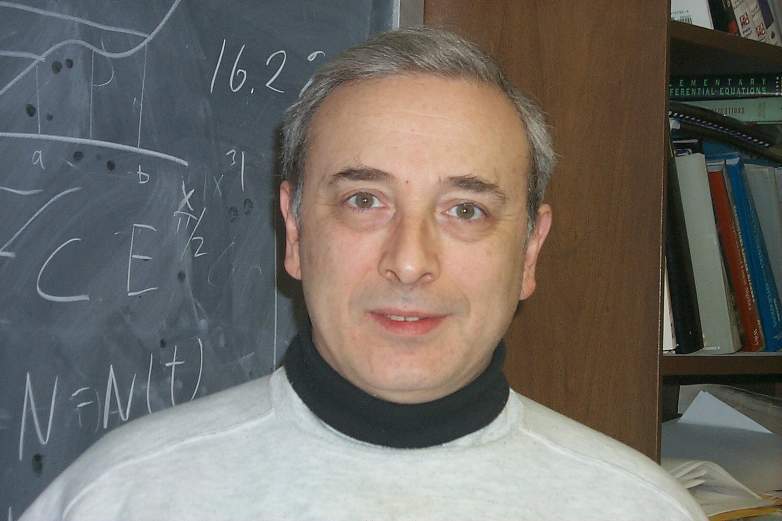
Michael Brin.
According to the author’s bio for a book he co-authored, Michael Brin is a “Professor Emeritus of Mathematics at the University of Maryland. He is the author of over thirty papers, three of which appeared in the Annals of Mathematics, and he has lectured at conferences and universities around the world. His main research areas are dynamical systems and Riemannian geometry. In 2008, he established the Michael Brin Prize in Dynamical Systems.”
3. Google Was Invented Through a Research Project at Stanford
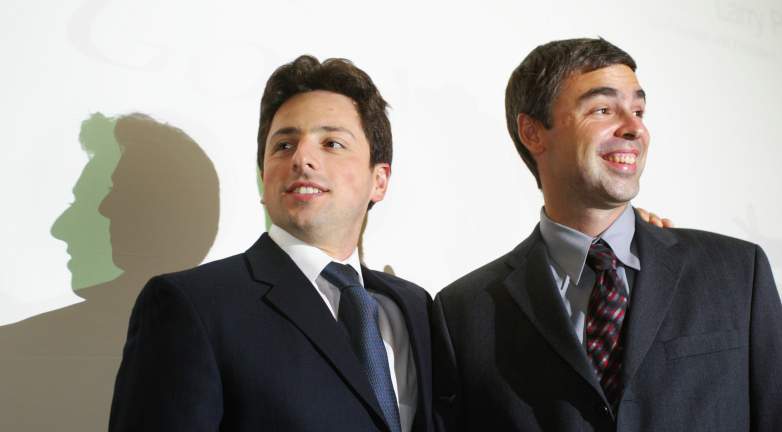
Google founders Sergey Brin (L) and Larry Page (R) smile prior to a news conference during the opening of the Frankfurt bookfair on October 7, 2004 in Frankfurt, Germany.
It was at Stanford that the idea for Google was hatched. Brin and Page were working on a research project when they “created a search engine that listed results according to the popularity of the pages,” Biography.com reported. They argued that “the most popular result would often be the most useful.” They developed an algorithm for measuring popularity.
Why did they call Google “googol”? It’s a mathematical term “which is a 1 followed by 100 zeros.” The year was 1998. According to ThoughtCo, the term appears in the book Mathematics and the Imagination by Edward Kasner and James Newman. To Brin and Page, ” the name represents the immense amount of information that a search engine has to sift through,” ThoughtCo reports.
According to Achievement.org, Page recruited Brin to help him with the project that he had already started. Page “found that ranking websites by the number of links leading to it from other sites was a far more useful measure of a Web document’s relevance to a user’s search criteria,” the site reported, explaining that, at that time, people often found themselves buried in irrelevant search results because information was ranked based only on “the frequency of appearance of a given word.”
ThoughtCo describes how Page and Brin worked on the new invention in their dorm rooms using “cheap, used, and borrowed personal computers” and putting items they needed on their credit cards.
Eventually, Google got the attention of Sun Microsystems co-founder Andy Bechtolsheim, who gave the pair $100,000 for their startup. Google’s logo has evolved over the years; it once contained an exclamation point, for example.
4. Page & Brin Are Worth Billions of Dollars Due to Their Invention
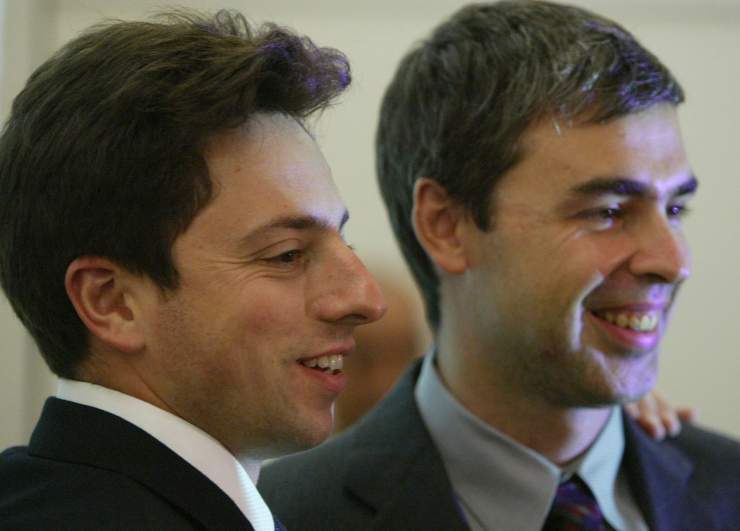
GettyGoogle founders Sergey Brin (L) and Larry Page pose for photographers prior to presenting their new Google Print product.
Founding Google was clearly one of the greatest inventions of its century, and it made both Brin and Page extremely rich men. In 2019, Forbes compiled a list of the richest people in the world (Amazon’s Jeff Bezos was #1 and Microsoft’s Bill Gates was #2).
Larry Page was listed as the 10th richest person in the world, with a net worth exceeding $50 billion. Page runs Alphabet, Google’s parent company. He was Google’s first CEO. CNN reported that Page is an investor in flying car companies.
Sergey Brin is listed as the 14th richest person in the world with a fortune of $49.8 billion. He is the president of Alphabet and ran the division of Google that made Google Glasses, according to Forbes, which notes that Google went public in 2004, changing its name to Alphabet in 2015.
5. Google Was Originally Called BackRub

Google Doodle.
Believe it or not, but Google was originally known as….BackRub. According to Gizmodo, this is what Google originally wrote on a company history page: “Larry and Sergey begin collaborating on a search engine called BackRub. BackRub operates on Stanford servers for more than a year—eventually taking up too much bandwidth.”
However, the domain name Google.com was first registered on September 15, 1997, Gizmodo reports. The site has a photo array of past Google logos, including the logo for BackRub, which featured a close-up of a man’s hand.
The BackRub creation sparked a research paper called, “The Anatomy of a Large-Scale Hypertextual Web Search Engine,” according to ThoughtCo.
READ NEXT: Junko Tabei Google Doodle.